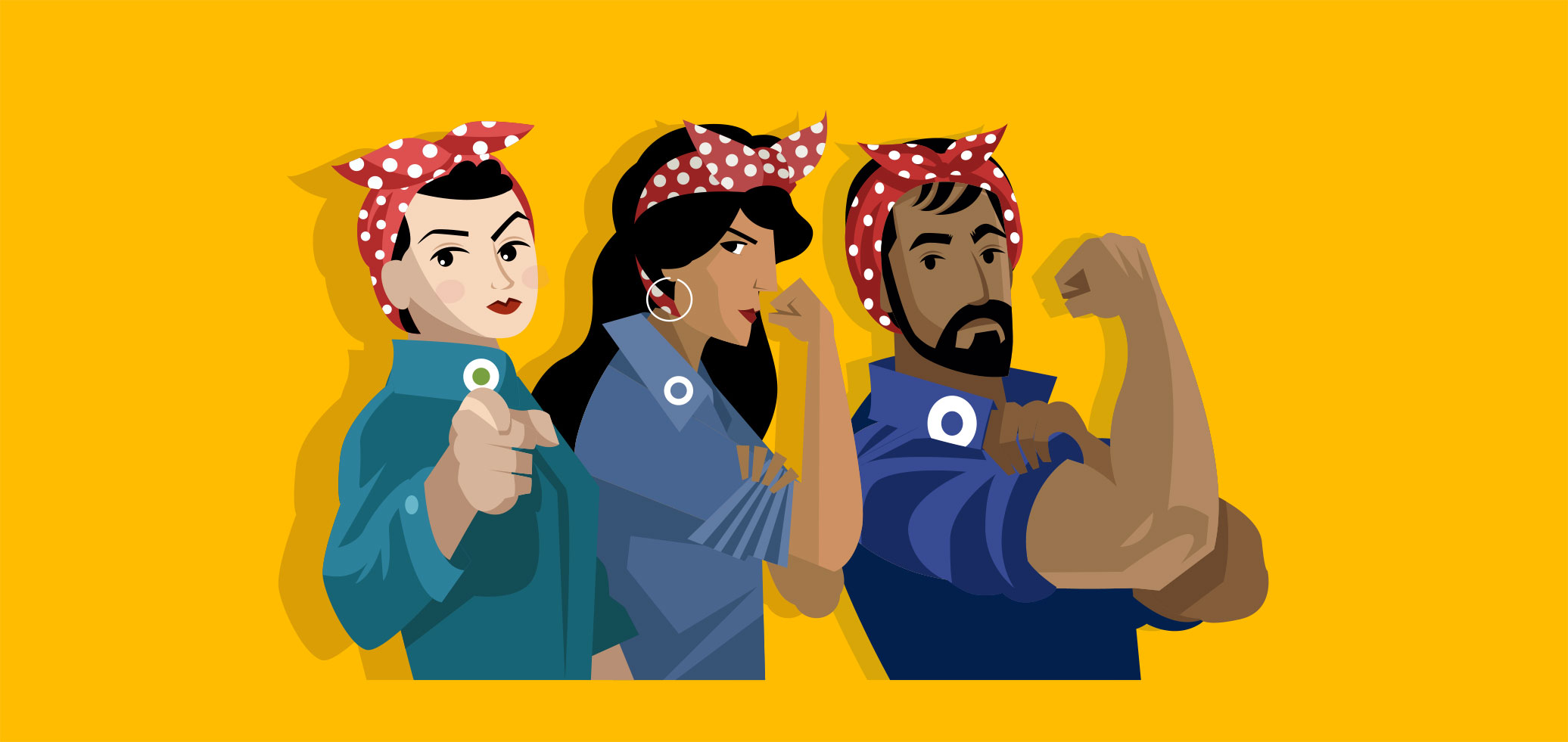This piece is part two of a three-part series about a restorative approach to equity, diversity & inclusion in the workplace. Part two discusses the elements of diversity and inclusion.
DIVERSITY
With equity learning now on track, the best way to celebrate this new level of awareness is by making a commitment to entrench the learning in the everyday. In the same way that personal EDI growth starts with reflecting on self-identity and privilege, corporate leaders ought to take a long gaze into the organizational mirror and ask, “Are we where we need to be?” The uncertainty of the forthcoming answer can be scary as it might mean wrestling with some hard truth. That was exactly what happened to us. Eventually we found a modicum of comfort in remembering that learning is a continuous process and success is in knowing that we are moving in the right direction.
The starting place looks different in every organization. In our case, we wanted to have a service that reflected the diversity of our community, so we committed to hiring from underrepresented groups until we had a balance of identities and experiences. When we started we had to admit that the identities represented on our team were not very diverse at all. We were lacking diversity in gender, race, age, and sexual orientation being among the most obvious deficiencies. We set out to correct it by hiring with intention.
To put this step into action, it required a deep-dive into our hiring documentation and orientation materials. Why were there no questions about diversity during our interview stage? Other than the generic statement about valuing diversity in the employee handbook, why didn’t it explicitly correlate to the mission of making campus safer? The biggest shift was learning that we, by the way we show up, might inadvertently be part of the problem because of systemic influences and past experiences of trauma. Turning our minds to the fact that for some of our students, coming from various places and experiences, people in uniforms may not conjure up feelings of safety. This took the goal of hiring for fit to a whole new level!
INCLUSION
If equity is learning about making the theoretical shift, and a commitment to diversity is the aspirational springboard to change, inclusion is where the rubber hits the road in the workplace. There are no shortcuts for this section because anywhere that human relationships are central, things get complicated quickly.
Enter a restorative approach. A forward-focused principled way of supporting and understanding human connections through facilitated on-going dialogue. When engaging in a restorative way, communities grow stronger by appreciating the value in the diversity of each voice. Participants feel heard by their peers and better connected for the way forward. The practical application of a restorative approach lends itself well to collaborative decision making and having a mechanism to canvas a range of perspectives, especially helpful when addressing complex systemic issues. In bringing people together on a regular basis for meaningful conversations, participants practice the skill of balancing speaking one’s own truth with listening and learning from others. Like learning to play an instrument or taking up a new sport, this too will take practice. Committing to the practice time is critical in creating a community where folks feel like they belong but it also builds capacity to resolve conflict using the same skill and to respond fully when things go wrong.
When conflict arises, a restorative approach prioritizes collective understanding and responsibility over individual punishment and deterrence. This goes beyond the usual adversarial framework that roots conflict as just between directly involved parties. It probes further to ‘who else was impacted?’ and ‘what needs to happen to make things right?’ Leaders of inclusive workspaces will pay close attention to the intersecting relationships of the team and insist on them interacting in just ways through personal commitments and community accountability. As workplace culture extends beyond the interpersonal relationships of a workgroup, a restorative approach also serves as a way to check-in on the social relationships and systemic realities throughout all levels of the organization to ensure a healthy, equitable, and respectful climate.
Typically, in non-restorative spaces, the knee jerk reaction to conflict is to make the offender apologize so things can go back to normal. This happens when there is a knowledge gap around how to lead a meaningful relationship-based response to conflict. That is to slow down and do an analysis of who has been harmed, finding out what they need, and what needs to happen to address the harms. In more egregious situations, folks get rapidly removed from the workplace or affected group because corporate and reputational pressures dictate setting a tone of significant consequences. The problem with either reaction is that neither will get at understanding the context and cause of conflict. A quick out of the gate ‘I’m sorry’ gets tossed around without ever hearing from others about how they were impacted and what they need to move forward. Similarly, just getting rid of the bad apple feels good and decisive at the time but rarely does the hard work to address workplace climate and repair relationships.
Taking a restorative approach will transform the way people interact with, and feel connected to each other. This does not happen overnight and without some intention. When following through on the commitment to build diversity of experience and identities in the workgroup, watch out for the welcome to OUR team philosophy held out to new hires. By bringing folks together, on a regular basis, to talk with each other and build understanding from various perspectives, this restorative approach translates into a more genuine commitment to diversity. Welcome new voices and perspectives as equals, not as guests.
So, what does that look like in real-life? Our campus security team knows that once every four days, we will all sit together and talk about the work. Each team member is invited to respond to a set of questions as the conversation works around the space known as the Briefing Room. This provides an opportunity to hear from every voice. The questions change slightly each time but essentially cover What trends stand out to you about the work from the last shift cycle? What are you working on today? What is something you did last rotation that makes you proud? By asking these types of questions, we make the conversation equally accessible to the officer who has 30 years of experience as the one with 30 days. Over time, as the officers hear from each other about what matters in their work, they are organically getting to know more about each other as colleagues and it has shifted the way they support each other.
I knew we were on the right path when a new officer approached our management team and said, “I don’t like how Officer X is being treated, it seems he’s being left out”. This officer was reflecting on her own positive experience of joining the team and could not reconcile what she saw happening to another new officer who was being excluded. By bringing the team together, in a space where they are used to hearing from each other, we sat in the circle and heard from each person on what is standing in the way of the team being more inclusive and what supports are required to get there. Shared with Officer X’s permission, here is an excerpt from an email about how this restorative approach has made a difference for him.
“…I know today’s gathering wasn’t about me but I can’t stop thinking that it is for me. I walked out of the circle feeling listened to, recognized and validated. I feel like my dignity that was taken away has been restored to me. The support and validation accorded to everyone in the team was quite phenomenal… the tone has been set for what is acceptable behavior and what can be done differently going forward. I therefore commit myself to working closely with colleagues towards achieving the goals. INSHALLAH.”






